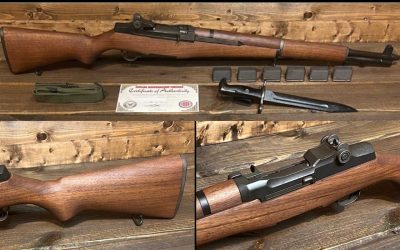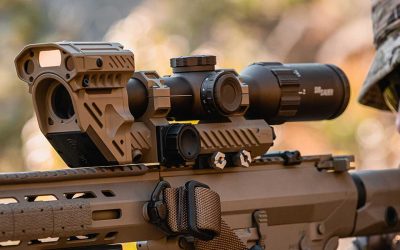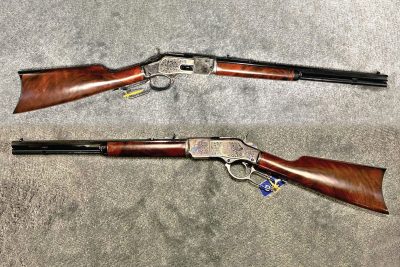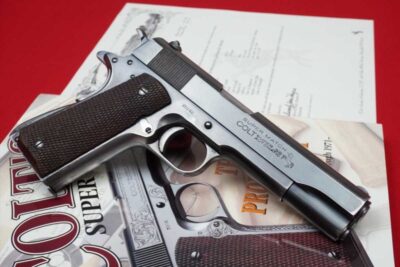The History Behind the M1 Garand Rifle
By Logan Metesh, GunBroker.com Contributor
The M1 Garand semi-automatic rifle was hailed by General George Patton as being “the greatest battle implement ever devised,” and it’s no stretch to say that most WWII-era GIs would agree with him. In this video we cover the M1 Garand history; who made it, what it was used for, when did the U.S. Army stop using it, and how you can purchase a M1 Garand online today.
Who originally made the M1 Garand?
Designed by John C. Garand at Springfield Armory, the rifle was officially designated as the M1 and was adopted as the standard US infantry rifle in 1936. Fed from an en-bloc clip that held eight rounds of .30-06 ammo, it was meant to replace the M1903 bolt-action rifle. The first production M1 rifle was successfully proofed, function-checked, and accurized on July 21, 1937, and the U.S. Army accepted the first run of guns in 1938.
What was the M1 Garand made for?
By January 1940, Springfield Armory was producing 100 rifles per day. (Remember, this was still ‘peacetime’ in the US.) Production peaked in January 1944 with 122,001 M1 Garands produced in just 31 days. That’s 3,936 rifles per day, or 164 rifles per hour! In just a few short years, an hour’s production had eclipsed a previous day’s production by more than 1.5 times!
To meet wartime demand, Winchester also tooled up to produce the M1 Garand. By the time World War II ended in 1945, Springfield Armory’s total production numbered 3,526,922 M1 rifles. Records indicate Winchester produced a total of 513,880 M1s between December 1940 and June 1945. Between the two of them, their combined WWII production totaled 4,040,802 rifles.
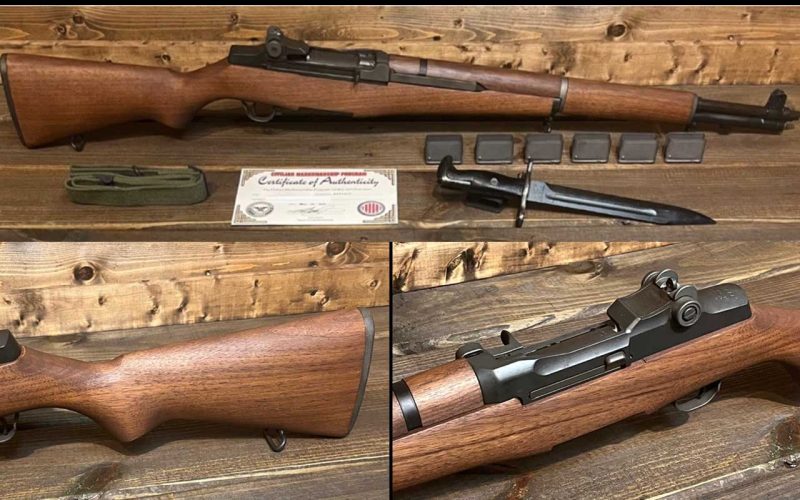
With the war over, there was a lull in production of this service rifle, but the need for the M1 was seen again in the 1950s due to hostilities in Korea which resulted in the Korean War.
Springfield Armory was supplemented by two other companies with production in the 1950s: tractor maker International Harvester and gunmaker Harrington & Richardson. International Harvester produced 337,623 M1 Garand rifles between 1952 and 1956, while Harrington & Richardson delivered 428,600 rifles in the same time period.
When did the U.S. military stop using the M1?
By the late-50s, the M1 was being phased out in America by the M14 rifle and, eventually, the M16 rifle. Large numbers of surplus Garands were sent to our present and then-allies under various military-assistance programs, including South Korea, South Vietnam, Turkey, Iran, Denmark, Greece and several Central and South American countries.
Browse Listings on GunBroker.com for (CMP)
Civilian Marksmanship Program M1 Garand
Today, the guns are highly sought-after by shooters and collectors alike. If you’re looking to add an M1 Garand to your collection, be sure to check out the listings on GunBroker.com. In addition to complete rifles, you’ll also find a wide variety of parts, accessories, and ammo.

About the Author: Logan Metesh of High Caliber History is a historian with a focus on firearms history and development. Logan is also host of the No Lowballers Podcast with the at GunBroker.com and GoWild teams to discuss topics such as mobster favorites, collector pieces, war-time weapons, hunting gun history, competition firearms and more.
Related Videos: Iconic Firearms: History of the M1A Springfield Rifle [Video]
Related Articles: Yes! You Can Buy a Machine Gun on GunBroker
Related Articles: 1911 Colt and Beyond: Legendary Handguns of John Browning

![Smith & Wesson Equalizer™ 9mm Pistol [Video]](https://content.gunbroker.com/wp-content/uploads/2023/01/smith_wesson_equalizer-1_WR-400x250.jpg)
![Features of the EAA Girsan MC P35 PI: Easy-to-Carry [Video]](https://content.gunbroker.com/wp-content/uploads/2023/01/EAA_MC_P35_PI_web-400x250.jpg)
![Barrett MRAD MK22™: Multi-Caliber Bolt Action Sniper Rifle [Video]](https://content.gunbroker.com/wp-content/uploads/2023/01/Barrett-MRAD-MK22-featured_A-400x250.jpg)
![EAA Witness2311® Double Stack 1911 Handgun [Video]](https://content.gunbroker.com/wp-content/uploads/2023/01/EAA_Witness_2311-mc-1911-s10_featured-400x250.jpg)
![Meprolight Mepro Tru-Vision™ The Ultimate Red-Dot Sight [Video]](https://content.gunbroker.com/wp-content/uploads/2023/01/tru-vision-1-1200-X-800-400x267.jpg)
